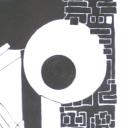Yahoo Answers is shutting down on May 4th, 2021 (Eastern Time) and beginning April 20th, 2021 (Eastern Time) the Yahoo Answers website will be in read-only mode. There will be no changes to other Yahoo properties or services, or your Yahoo account. You can find more information about the Yahoo Answers shutdown and how to download your data on this help page.
Trending News
A Few Questions About Shostakovitch’s 2nd. Piano Concerto?
Catchy little piece, isn’t it? But besides that, in my long life I’ve only heard it three or four times, the most recent a few nights ago. Although Shostakovitch's’s detractors claim much of his work was derivative I thought his later works were highly creative, innovative and original, including the 2nd. Piano Concerto. So, here are some questions perhaps some of you might be able to help us with.
Why isn’t the 2nd. Piano Concerto performed more often?
How difficult is this to play for an accomplished pianist? Especially the Allegro, with it’s variable scale and time changes and final coda?
After WWII Shostakovitch often had censorship problems with the Soviet government. Because the 2nd. Piano Concerto was obviously influenced by the American jazz movement of the 50s how was he able to perform this in Russia at the time? Or perhaps the Soviets claimed that they invented jazz, too?
And last, if you’ve heard his 2nd. What is you opinion musically of the work?
Here is a link to a performance of the first movement for those of you who have never heard this quirky, unusual concerto:
American jazz and it’s influence went through two stages. It hit it’s early peak during the 20s, our Jazz Age, and the influence can be found in both the intended (like Claude Bolling) and the obvious (like Igor Stravinsky). Then it pretty much faded away during the Depression as an influence beyond it’s original hard-core followers. After WWII and the advent of the Beats and the post-war intellectuals it regained it’s influence. It is the second-wave influence that I detect in Shostakovitch’s later works.
Del_icious, I really have no idea how popular the 2nd. is or how often it is performed. My knowledge of the world’s concert halls and their programs is pretty much limited to what is performed here in LA and to the live broadcasts I listen to out of SF, San Diego and NYC.
Nemesis, after all these years I have finally given this concerto my fullest attention and after having listened to it for the sixth time in the past few days I now place this among my favorite piano concerti. Next, I will re-introduce myself to his 1st. piano Concerto.
However, I have to dissagree with you on the jazz influence. In the first movement I can imagine it as down-tempoed theme music for Peter Gunn or 77 Sunset Strip or the film noir movie 'The Third Man.'. And the glorious third movement allegro? Imagine it played down tempo, losing the 7/8 time and the accompanying pizzicato strings, and see if you hear it this way. And there is absolutely nothing wrong with infusing outside influences into original compositions. All composers have done this.
Four wonderful, well-thought replies. If it were up to me you would all share 'best' answer. Sadly, YA doesn't work that way. So please don't feel slighted if you reply isn't chosen. And i thank all of you for taking the time to reply.
5 Answers
- ?Lv 61 decade agoFavorite Answer
I have actually learnt it just 6 months ago. I love it for its humorous parodies of the Soviet government as well as its gorgeous 2nd movement, but like you said, it's a "catchy little piece".
That is exactly why it isn't performed more frequently in my country as well. Come to think of it, I've never heard it played live over here. It doesn't sound difficult, and that's why it isn't on many virtuosi's programs. There is pretty much nothing to 'show off' with in this work for the soloist. Its difficulties, in my opinion, is more in terms of ensemble and rhythmic work. Shame that audiences and performers nowadays generally hold 'virtuosity' as the most important element in any concerto.
Technically, it isn't very hard. It's not an intermediate or intermediate-advanced pianist's repertoire, but it's not as hard as Rachmaninoff. For one, it's only about half as long as a Rachmaninoff concerto. A bit of 'pattern memorization' is needed (when it comes to the scalic passages), but otherwise it's one of the lightest concertos. You will need very strong fingers and an excellent set of fingering (especially for the Allegro). The final coda is not hard - it's literally Hanon exercises, except played very fast. My problem while learning it was actually the first movement's middle section with all the octaves. My left hand is ok with octaves, my right hand is slightly smaller so it feels more awkward and tiring to be stretched out almost to my limit for the whole section (it can only reach a major 9th).
Musically:
Shostakovich's 2nd piano concerto is neo-classical in style. Actually I've never found anything in this work 'jazz-influenced'. There's nothing wrong with infusing outside influences into original compositions, it just doesn't give me that idea. To me, the first movement is like an overblown version of Soviet 'patriotic bombast' but written in a very cutesy way, especially for the outer sections - that's what makes it so funny. It reminds me of toy figurines marching along with plastic rifles. The government demanded that music be patriotic, happy and grand so that the people would feel good (that's Socialist Realism for you), and to me Shostakovich sounded like he was going "Alright, so you want grand and patriotic? Well I'll give it to you...in the form of a cute little military march. You can't condemn it because it's indeed patriotic-sounding." The snare drums have a field day and you could perhaps even hear the canons of war going off in the middle section. I think that, as well as the virtuosic bombast in the 3rd movement, probably made it through Soviet censorship, since they loved bombastic-sounding music (because it sounds grand).
The second movement is one of the most sublime pieces I've ever heard written for the piano. Haunting is the word I'll use to describe it. It's so heartwrenching, so dark yet so beautiful. To me, it reflects the state of life in Soviet Russia in those days. To me, it screams the word 'resignation'. It's as if Shostakovich had decided to transfer the pain and bleakness felt by the Soviet citizens into music - oppressed, hopes dashed repeatedly, inner struggle amidst a seemingly tranquil exterior. Of course, that's just me, and I'm sure many wouldn't agree, and you don't have to agree with me.
The third movement is very bright and sunny. The 7/8 sections remind me of Russian folk dances and celebrations. This movement also has me struggling to control my laughter whenever I come to the 'Hanon exercises'. It's possibly the most virtuosic-sounding of the three movements, but it's also the most fun, I feel.
Source(s): my two-cents' worth. - 1 decade ago
I can't say that I hold this work in very high regard. It's fun, perky and undemanding. And, of course, the lovely slow movement has almost a life of its own. I am surprised that you suggest it isn't often performed. In the UK, it is one of Shostakovich's most performed works.
Shostakovich had been using jazz influences in his music since the 1930s and this never really caused him any trouble. Personally, though, I feel Shostakovich hit an inspirational trough after the magnificent Tenth Symphony. For me, many work of the mid- and late fifties are a little pale and lacking in originality. I would include the Eleventh Symphony, Sixth String Quartet and the Second Piano Concerto in that list. Shostakovich seemed to find his feet again with the First Cello Concerto in 1959.
- NemesisLv 71 decade ago
I'm frankly puzzled by the repeated references to the 'jazz' influences discerned in the second concerto, while they are only evident, emphatically so, to the very marrow, in the first? I have performed this, as well as the first, many times, and to me -- slightly coloured by the purpose for which it was written in the first place -- it is a very fine example of the concerto for my instrument that has taken up the challenge first put by Ravel in his G-major, and subsequently, inimitably, by Poulenc in his Concerto of 1949:
http://www.youtube.com/watch?v=qzR1drF6qMA&feature...
the piano concerto as 'musique de divertissement' rather than a vehicle for combat and heroics. Put to the rack, the Poulenc will always have my heart in this category, but Shostakovich's Slav reading in op.102 has no reason to have to blush, and whenever I have been asked to do it, my pleasure is as fulsome as it is genuine. The technical demands are under-reported: they're just not terribly visible and they mainly concern ensemble and transparency of texture with the band. Not things the headlines are made up of. :-)
I frankly don't think jazz has anything to do with this work as a prime source of influence.
But it's a delightful and very high quality divertissement, for all that... :-)
Edit:
I certainly never wished to give the impression that I somehow 'disapproved' of any such external influences, on the contrary. But I perhaps could have phrased things with a little more nuance. By the time of op.102, those influences drawn from jazz had merged with Shostakovich's general musical vocabulary and he could draw on any element from there at will. Of course there are inflections in op.102 that are reminiscent of jazz, but to me 'jazz' is not what op.102 is about. A major contrast with the first concerto, where jazz explicitly is precisely what it's about, down to the structure of instrumental solos of soloists and their exchanges with orchestral soloists: it often appears a large scale 'jam session' in performance, and a darn good one at that! It is that distinction that I really sought to draw attention to, if a comparison has to be made.
All the best,
- petr bLv 71 decade ago
I am fond of both the Shostakovitch Piano Concerti.
But you said it, a bit more blithely than I would prefer: "Catchy little piece."
This is extremely pleasant, lively, moving worthwhile music. The 'bravura level' for the soloist is not great or visibly astonishing, and that could limit the choice of this music for many a performer, who by choice or deference to the average concert-goer will choose another piece with a more audible and / or visible technical display.
I prefer either of these concerti (the first with trumpet, written for his son to perform) to anything by Rachmaninoff, but that is my taste.
I do rue the fact many a worthwhile piece 'lacking' in some pyrotechnical writing or display languishes on the shelves because performers or audience generally demand (more) athletics with their music.
best regards, petr b.
- How do you think about the answers? You can sign in to vote the answer.



